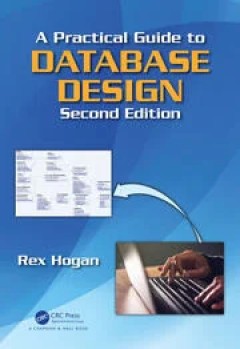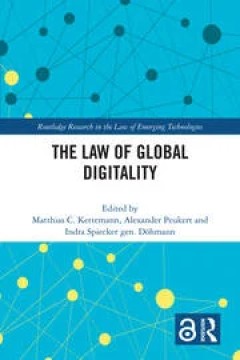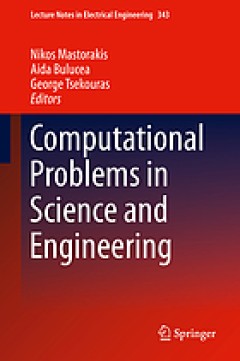Filter by

Progress in Automation, Robotics and Measuring Techniques; Volume 1. Control …
* Penelitian terbaru dalam otomasi, robotika, dan teknik pengukuran. * Hasil International Conference Automation 2015 yang diselenggarakan 18-20 Maret 2015 di Warsawa, Polandia. * Berfokus pada aplikasi industri otomatisasi, robotisasi, dan pemantauan. ;;; Kontrol, otomatisasi, robotika, dan teknik pengukuran sangat penting bagi perkembangan industri dalam beberapa dekade terakhir. Karena saat …
- Edition
- 350
- ISBN/ISSN
- 978-3-319-15796-2
- Collation
- -
- Series Title
- Sistem Cerdas dan Komputasi
- Call Number
- 629.892 SZE p

Elements of Probability and Statistics An Introduction to Probability with d…
This book provides an introduction to elementary probability and to Bayesian statistics using de Finetti's subjectivist approach. One of the features of this approach is that it does not require the introduction of sample space – a non-intrinsic concept that makes the treatment of elementary probability unnecessarily complicate – but introduces as fundamental the concept of random numbers d…
- Edition
- 1
- ISBN/ISSN
- 978-3-319-07254-8
- Collation
- 6 b/w illustrations, 27 illustrations in colour
- Series Title
- -
- Call Number
- -

Defense against the Black Arts
Exposing hacker methodology with concrete examples, this volume shows readers how to outwit computer predators. With screenshots and step by step instructions, the book discusses how to get into a Windows operating system without a username or password and how to hide an IP address to avoid detection. It explains how to find virtually anything on the Internet and explores techniques that hacker…
- Edition
- -
- ISBN/ISSN
- -
- Collation
- -
- Series Title
- -
- Call Number
- -

A Practical Guide to Database Design
Fully updated and expanded from the previous edition, A Practical Guide to Database Design, Second Edition is intended for those involved in the design or development of a database system or application. It begins by illustrating how to develop a Third Normal Form data model where data is placed “where it belongs”. The reader is taken step-by-step through the Normalization process, first us…
- Edition
- -
- ISBN/ISSN
- -
- Collation
- -
- Series Title
- -
- Call Number
- -

The Law of Global Digitality
The Internet is not an unchartered territory. On the Internet, norms matter. They interact, regulate, are contested and legitimated by multiple actors. But are they diverse and unstructured, or are they part of a recognizable order? And if the latter, what does this order look like? This collected volume explores these key questions while providing new perspectives on the role of law in time…
- Edition
- -
- ISBN/ISSN
- -
- Collation
- -
- Series Title
- -
- Call Number
- -

AI Knowledge Transfer from the University to Society
AI Knowledge Transfer from the University to Society: Applications in High-Impact Sectors brings together examples from the "Innovative Ecosystem with Artificial Intelligence for Andalusia 2025" project at the University of Seville, a series of sub-projects composed of research groups and different institutions or companies that explore the use of Artificial Intelligence in a variety of high-im…
- Edition
- -
- ISBN/ISSN
- -
- Collation
- -
- Series Title
- -
- Call Number
- -

Computational Modeling of Neural Activities for Statistical Inference
This authored monograph supplies empirical evidence for the Bayesian brain hypothesis by modeling event-related potentials (ERP) of the human electroencephalogram (EEG) during successive trials in cognitive tasks. The employed observer models are useful to compute probability distributions over observable events and hidden states, depending on which are present in the respective tasks. Bayesian…
- Edition
- -
- ISBN/ISSN
- 9783319322858
- Collation
- -
- Series Title
- -
- Call Number
- 004

Computational Modeling, Optimization and Manufacturing Simulation of Advanced…
This volume presents recent research work focused in the development of adequate theoretical and numerical formulations to describe the behavior of advanced engineering materials. Particular emphasis is devoted to applications in the fields of biological tissues, phase changing and porous materials, polymers and to micro/nano scale modeling. Sensitivity analysis, gradient and non-gradient based…
- Edition
- -
- ISBN/ISSN
- 9783319042657
- Collation
- viii, 393 pages
- Series Title
- -
- Call Number
- 004

Computational Nanomedicine and Nanotechnology : Lectures with Computer Practi…
Explains fundamental and advanced topics in nanomedicine and their applications, with a focus on nanophototherapy of cancer-related diseases Provides complete instructions for using simulations effectively to predict nanoscale properties for real systems Includes numerous exercises for each chapter as well as a computer practicum software developed for Maple Guides readers through both…
- Edition
- -
- ISBN/ISSN
- 9783319435770
- Collation
- 697 pages
- Series Title
- -
- Call Number
- 004

Computational Problems in Science and Engineering
This book provides readers with modern computational techniques for solving variety of problems from electrical, mechanical, civil and chemical engineering. Mathematical methods are presented in a unified manner, so they can be applied consistently to problems in applied electromagnetics, strength of materials, fluid mechanics, heat and mass transfer, environmental engineering, biomedical engin…
- Edition
- -
- ISBN/ISSN
- 9783319157658
- Collation
- vii, 491 pages
- Series Title
- -
- Call Number
- 004
 Computer Science, Information & General Works
Computer Science, Information & General Works  Philosophy & Psychology
Philosophy & Psychology  Religion
Religion  Social Sciences
Social Sciences  Language
Language  Pure Science
Pure Science  Applied Sciences
Applied Sciences  Art & Recreation
Art & Recreation  Literature
Literature  History & Geography
History & Geography